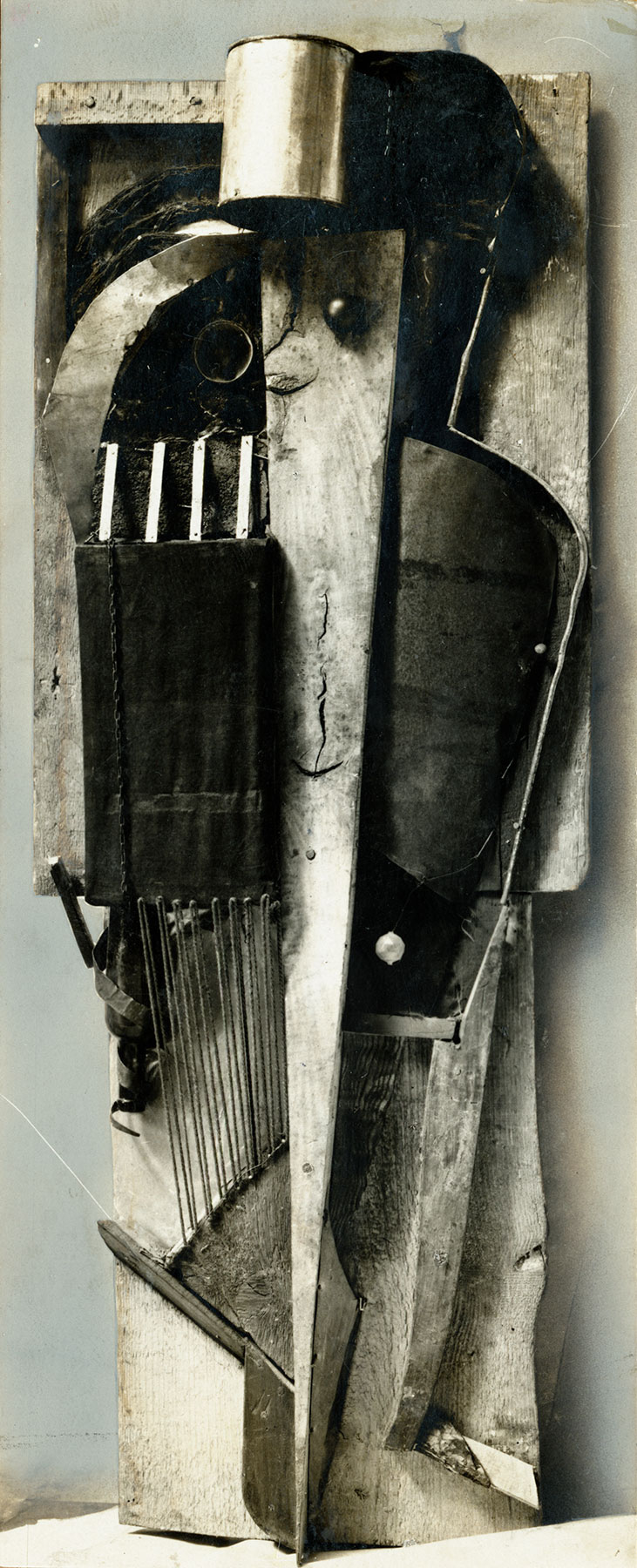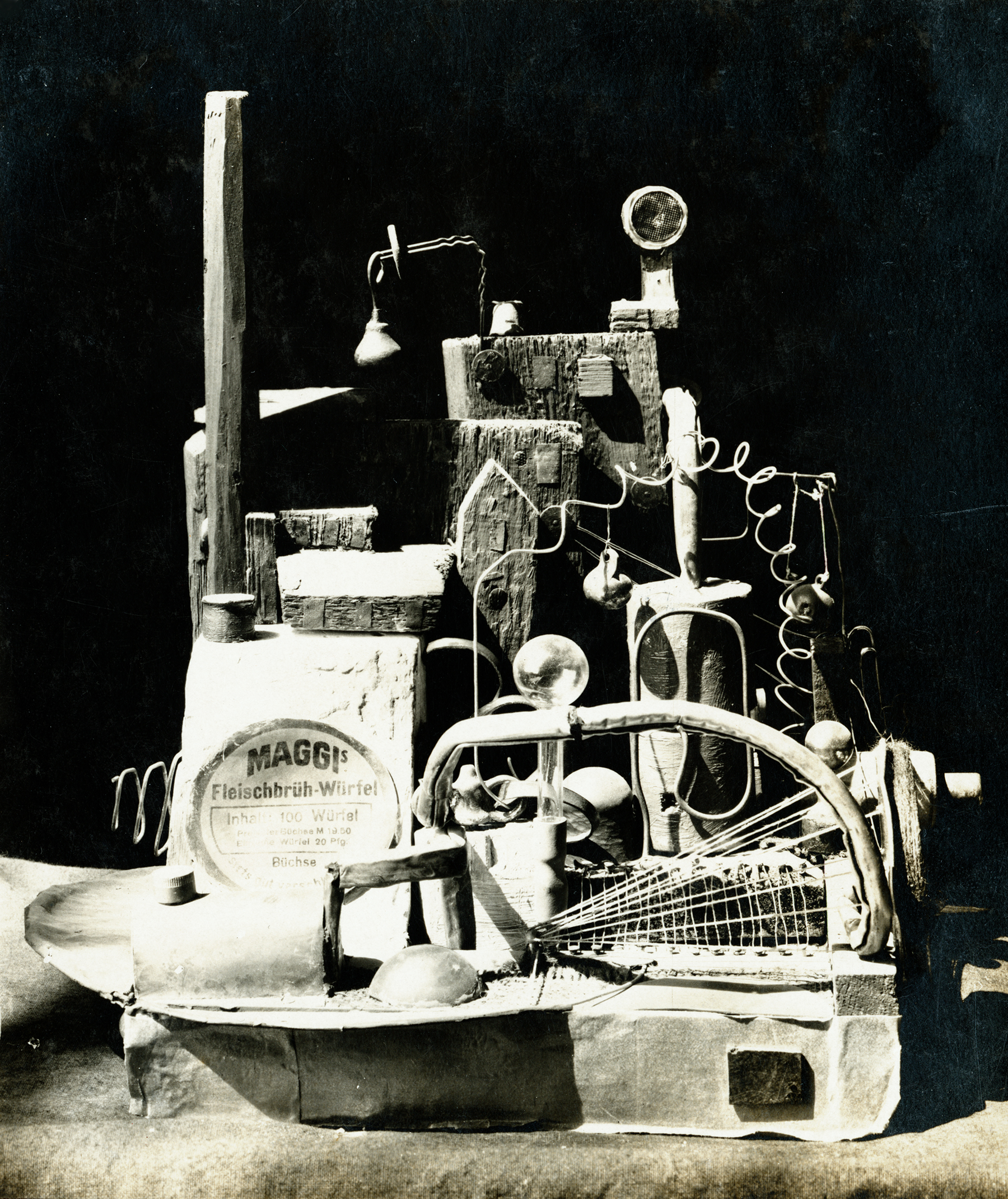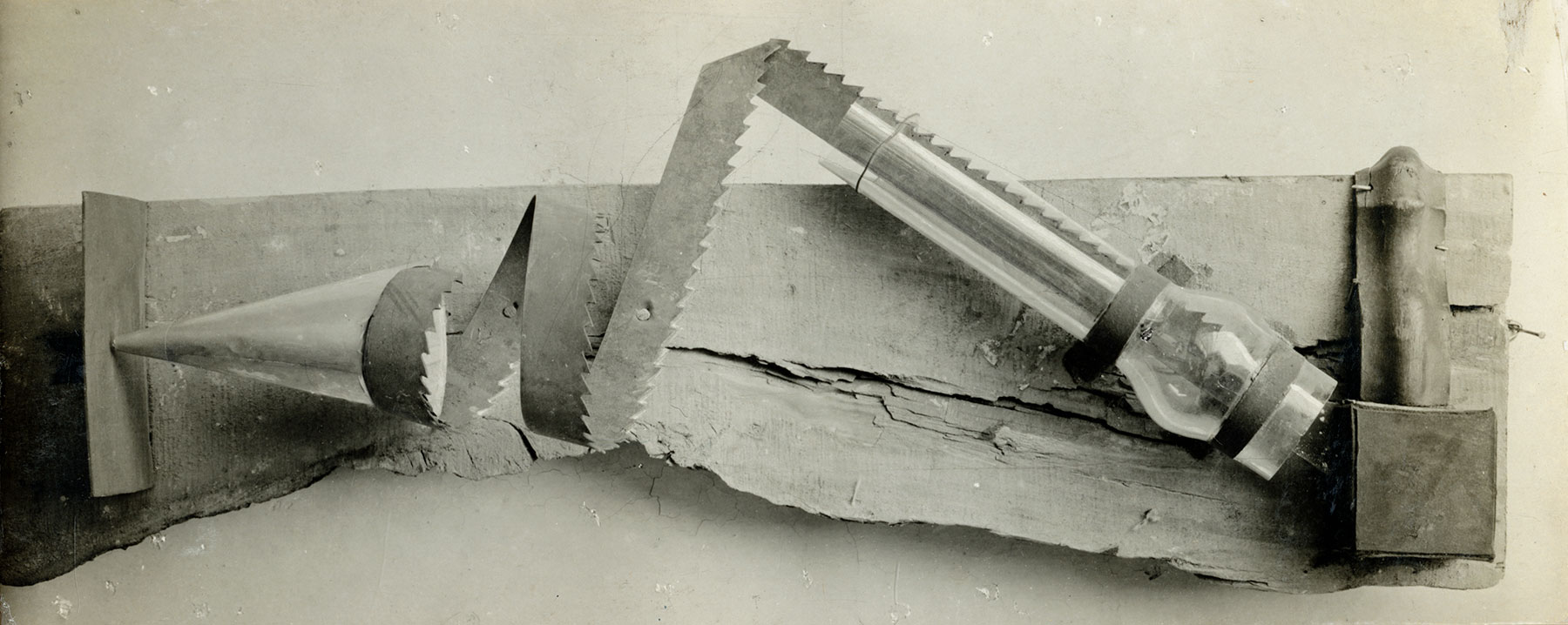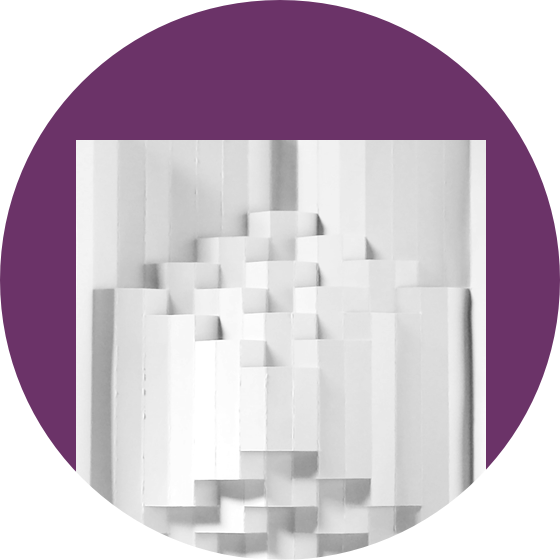Learning with Itten
The Bauhaus Preliminary Course began in the Fall semester of 1920 under the direction of Johannes Itten. Itten’s teaching methods centered on individual sensitivity to material, texture, color, and natural form. According to Itten, the goal of the course was
- to liberate the creative forces and thereby the artistic talents of the students….
- to make the students’ choice of career easier. Here, exercises with materials and textures were a valuable aid….
- to present the principles of creative composition to the students for their future career as artists….1
 Fig. 38.
Fig. 38.Grounded in his teaching in Vienna, Itten envisioned an introductory program comprised of one semester of study followed by a series of ateliers, such as Elementary Study of Form (Elementare Formlhere) and Study of Matter. Tactile exercises, body gymnastics to instill rhythm, systematic analyses of color and form, the investigation of light-dark contrasts, and other exercises prepared students to express themselves using the materials at hand.
Itten’s matter studies drew from a range of found objects and prosaic materials repurposed to form works of art. The resultant studies ranged from two-dimensional collages to sculptural assemblages (figs. 38—41).
Moving away from the often whimsical expressions of matter studies under Itten, exercises completed under Albers reflected his preference for economy, structure, and form.
The first two exercises attest to the influence of a Dadaist vocabulary, using found objects to construct abstracted albeit still recognizably figurative sculptures. The first matter study takes the form of a ship. Assembled and glued together from pieces of wood, wire, and the label from a can of Maggi bouillon cubes, this winsome vessel has a toylike quality. The relief assembled to form a man in a top hat has much the same effect. More abstract but no less playful is the sculpture labeled “Composition from various materials, bound by rhythmic forms.” Lengths of raffia arc in feathery tufts at the top, while a disc of cane backing—reminiscent of Picasso’s Still Life with Chair Caning (1912)—forms a fulcrum at the center.2
 Fig. 39.
Fig. 39. Fig. 40.
Fig. 40. Fig. 41.
Fig. 41.Itten’s departure from the Bauhaus in the Summer semester of 1923 marked a major shift in the organization of the Preliminary Course. Moving away from the overtly subjective and often whimsical expressions of matter studies under Itten, those exercises completed under Albers reflected his preference for economy, structure, and form.
Notes
- Johannes Itten, Design and Form: The Basic Course at the Bauhaus and Later (New York: Van Nostrand Reinhold Company, 1965), 9–10. ↩
- Martin Busch, “The Preliminary Course at the Early Bauhaus,” in Klaus-Jürgen Winkler, ed., Bauhaus-Alben 1 (Weimar: Verlag der Bauhaus-Universität Weimar, 2010), 18–66. ↩
